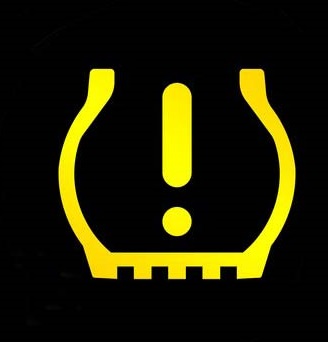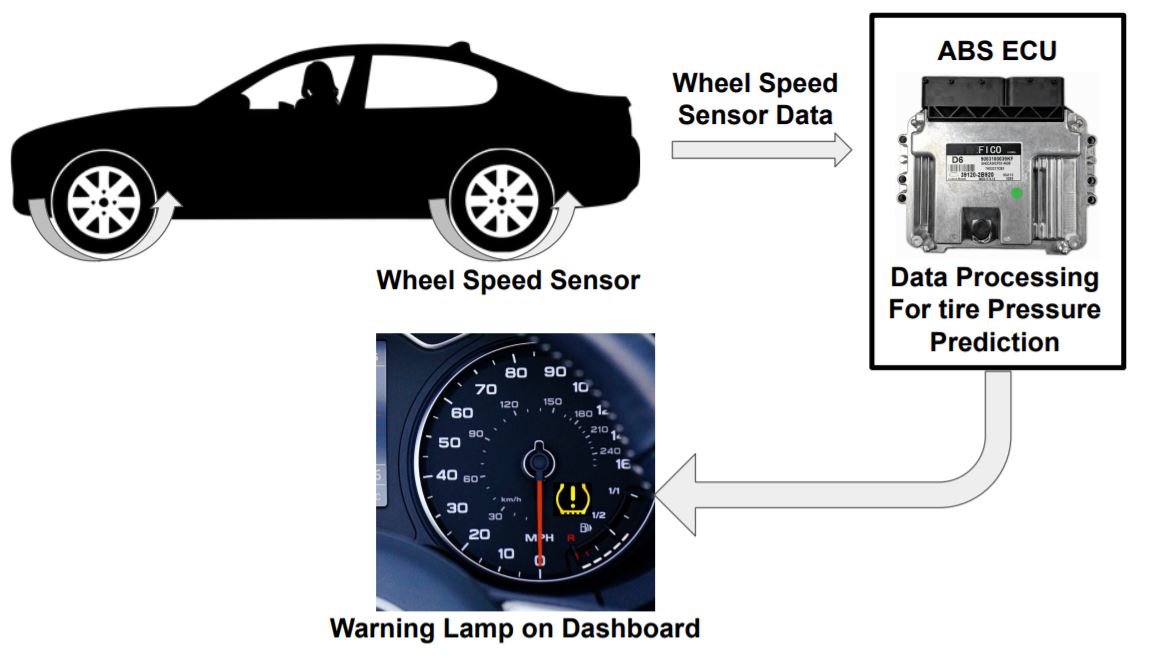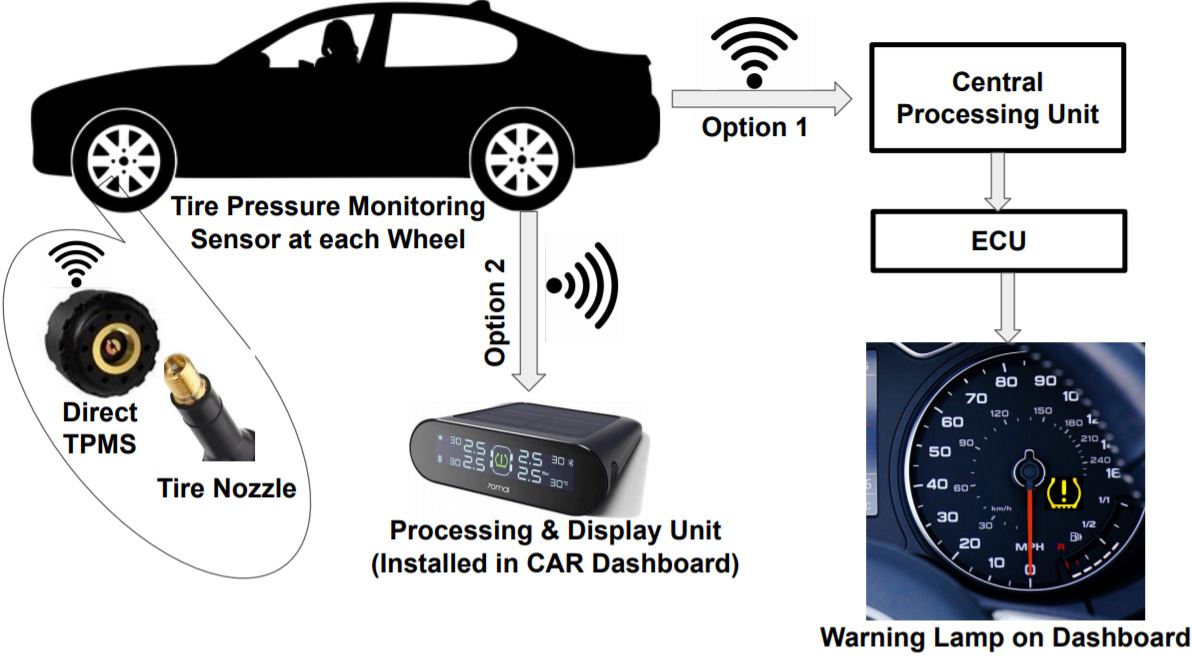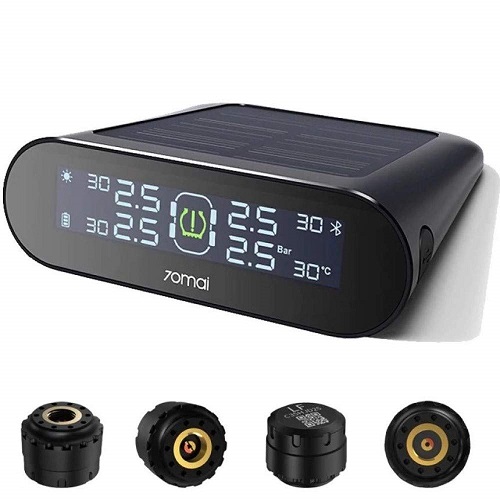When going for a long drive, we always check if tire air pressure is within limits because inflated tires may cause serious car accidents. In this article we will discuss different types of Tire Pressure Monitoring systems or TPMS, their working advantages, and their limitations.
What is TPMS or Tire Pressure Monitoring systems?
TPMS or Tire Pressure Monitoring System monitors the tire pressure continuously and provide alerts to users when tire pressure reaches unsafe levels.

In some countries, TPMS are mandatory for vehicles and it is installed by car manufacturers.
These vehicles indicate a yellow symbol in the dashboard if tire pressure reaches an unsafe level. In case your vehicle is not equipped with a TPMS, installation of external Tire Pressure Monitoring System is also an option.
Types of Tire Pressure Monitoring System
Following two types of TPMS technologies are used to monitor a vehicle’s tire pressure continuously.
- Indirect TPMS
- Direct TPMS
Indirect TPMS
Indirect TPMS predicts tire pressure from wheel speed sensors and car driving speed. In this vehicle ECU compares the rate of revolution of the vehicle wheel and vehicle speed to predict tire pressure.

For example, tire diameter reduces if the tire is flat or has low air pressure. As a result of reduced tire diameter for every revolution of the wheel, the vehicle will move relatively smaller distances and vice versa. From this comparison data, Car ECU can predict if the tire pressure is within limits or not.
Indirect TPMS does not measure actual tire pressure. They predict tire pressure by comparing vehicle speed and tire rotation data with the data available in the past.
Advantages of Indirect TPMS
- Low cost.
- Maintenance is not required.
- Comes as a feature from car manufacturers.
Disadvantages of Indirect TPMS
- Less Accurate.
- Need to reset at various scenarios.
- Accuracy is dependent on tire type and wears in tires.
- Individual tire pressure data is not available.
- Installed by car manufacturer only.
Direct TPMS

In the direct Tire Pressure Monitoring System, we install tire air pressure monitoring sensors in each tire. These pressure monitoring sensors send real-time pressure data wirelessly to the central monitoring unit where this data is analyzed.
In this way, individual tire pressure data and alerts are provided to the user. Direct tire pressure monitoring systems have no dependency on car manufacturers. You can purchase and install direct TPMS in your vehicle.

Advantages Direct TPMS
- Indicates actual tire pressure for each tire.
- No dependency on the type of the tire and wear in it.
- Very long battery life.
Disadvantages Direct TPMS
- High Cost.
- Sensors need to be removed and installed after inflating tires.
- More prone to damage from the outside environment.
We will keep updating more information on the tire pressure monitoring system. Please add your comments, suggestions, or questions in the comment box. We suggest you read this article on Self Driving Cars.

Add a Comment